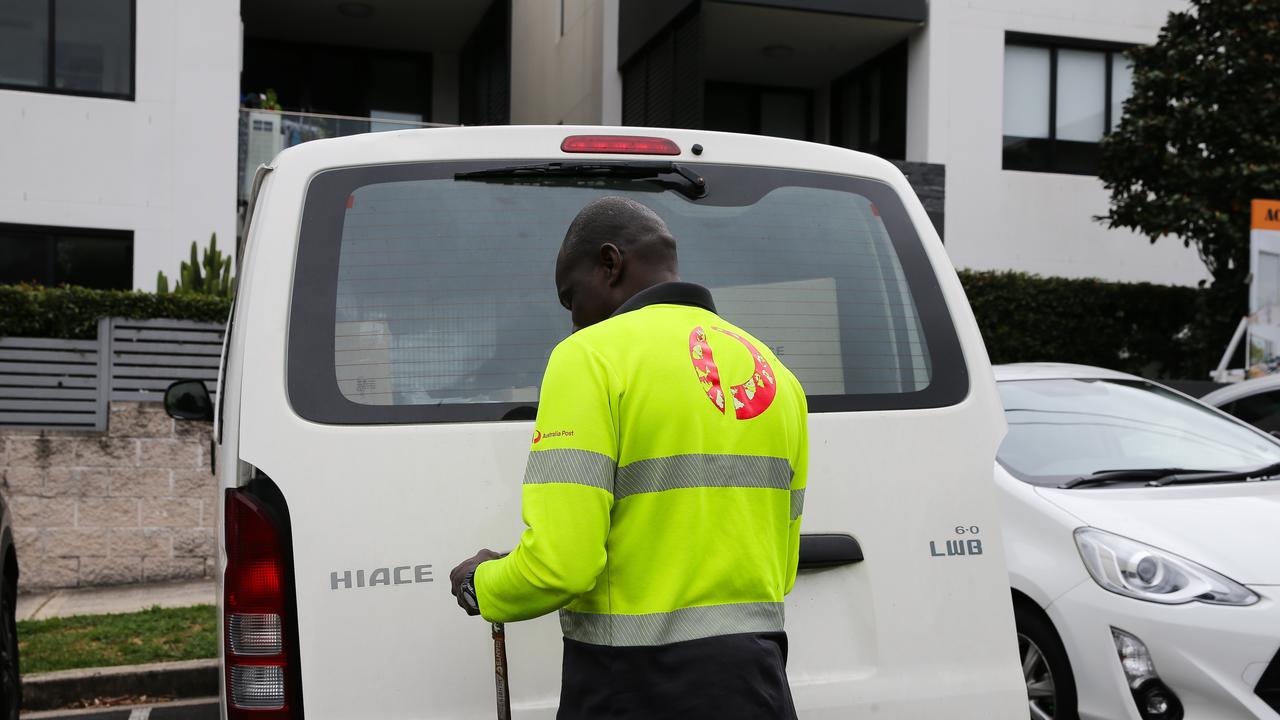Top 15 Aussie suburbs where high delayed deliveries are expected
Aussies likely to experience high levels of delayed deliveries are being warned to plan ahead if they want their Christmas presents on time.
Aussies hoping to get their Christmas presents delivered on time are being warned to allow extra time, and the top 15 suburbs for the highest delays reveal where people need to plan ahead.
Truganina in Victoria is the worst suburb for late mail, with 58.8 per cent of people reporting late package deliveries, according to e-commerce delivery platform Shippit.
Kwinana Town Centre in Western Australia comes in second at 33.9 per cent, while Broadway in NSW ranks third at 31 per cent.
Outside of the major metro areas, the top three postcodes for worst delivery delays nationwide are Christmas Island (91.6 per cent), Doomadgee in Queensland (79.9 per cent) and Badu Island (71.5 per cent).
The data analysed delivery outcomes of more than 4000 retailers, including Kmart, Myer, Big W, Baby Bunting and R.M.Williams in the 12 months up to the end of November 2024.
Based on 50 million orders so far in 2024, Shippit’s data reveals the suburbs with the highest and lowest proportion of delayed deliveries.
Shippit co-chief executive officer Rob Hango-Zada said those suburbs with poor delivery outcomes usually tended to be a direct result of bottlenecks in the delivery supply chain.
“If you take a macro perspective, South Australia and Western Australia tend to be the hardest hit often because a lot of the commercial volumes come out of the eastern seaboard,” Mr Hango-Zada told NewsWire.
“When you start to look at delays, they start to come in all sorts of bottlenecks and typically where you see bottlenecks is in the sorting process.
“What I mean by that is items being collected from their point of origin, they then get hubbed in a central depot where they get sorted into all the different lanes and then they get put on line haul.
“So, those suburbs that are more consumption led and typically don’t have high level of service on an average day, the delivery delays tend to be more pronounced in those areas when there’s really high volumes going through a network because of those bottlenecks.”

However, Mr Hango-Zada said high populated areas, such as Alexandria (25.7 per cent) and Rosebery (28.6 per cent) in Sydney, experiencing delivery delays were likely due a “high level of concentration” of high volumes of orders.
“Those types of suburbs that tend to have a high amount of volume on a regular day then get absolutely decimated during periods of peak demand as well,” he said.
“You typically see driver shortages just purely being the constraint, that could explain why we’re seeing that in highly popular areas.
“Typically, those with densely populated areas have fewer geographical spots, so it creates more of a deluge on those particular routes.”
The latest Shippit data also found standard shipping on average was 5.6 days and costs $10.26, which is a jump from the two days average shipping at a cost of $9 in 2018.
Mr Hango-Zada said high sale times throughout the year, like Cyber Monday, could cause headaches for small to medium-sized businesses if they were not ready for a large amount of orders.
“While we’re looking at the delay side on delivery, what’s often not reported is how long it takes for a retailer to fulfil their orders,” he said.
“We’re seeing an inundation of particular retailers.
“When you think about the average customer who is waiting for their delivery, they don’t have insight into whether the delay is in the fulfilment where a retailer has to go and pick, pack and label the order and even have inventory to do that versus the carrier that’s actually carrying it.”
Mr Hango-Zada said one in two customers would not return to a retailer due to a bad delivery experience.
“That’s quite an overwhelming statistic because when you really think about all the money and effort that’s gone into attracting a customer to buy with that particular retailer, if that particular experience is not up to par, then you’re losing up to half of all the customers you’re shipping the product to,” he said.
“The data suggests it and we see it play out where retailers that have a bad delivery experience offering tend to suffer in terms of the lifetime value of customers they’ve attracted.
“Typically, we blame the courier that’s the one responsible for the delay, but it’s actually that end-to-end process of fulfilment and delivery that causes the protracted delays.
“We’re seeing the delays more pronounced among the retailers who are fulfilling orders.”

But all is not lost, with consumers still likely to get their Christmas deliveries on time, as long as they plan ahead.
“We tend to see an industry that has quite a high ability to recover, so by all intents and purposes a lot of businesses are relying on this retail trade season to actually make the year,” Mr Hango-Zada said.
“The focus of all retails and all carriers I’ve spoken to is their No.1 job is to keep orders flowing and get orders to customers within a realistic time frame.
More Coverage
“We’re seeing a lot more focus on delivering on time, which is great.
“I don’t think consumers should be panicking yet.
“There’s a big job in the industry to get orders to customers by the big day.”




